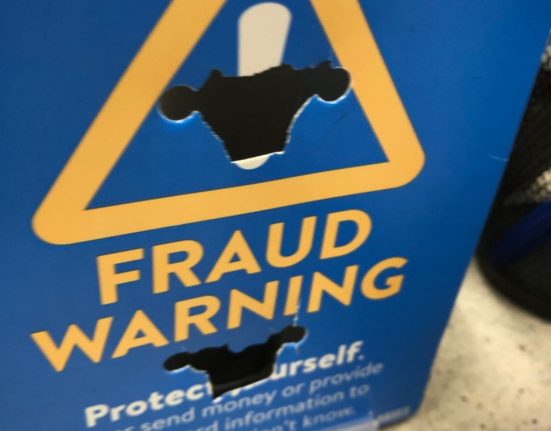You’ve finished applying to college, got accepted and made your decision. Now it’s time to apply again, this time for financial aid.
Whether you’re looking to cover the full cost or just fill in the gaps, student loans can help make college more affordable by spreading out the payments over time. Here’s how to apply for a student loan, step by step.
How to apply for a student loan
Step 1: Fill out the FAFSA
The first step is to fill out the Free Application for Federal Student Aid (FAFSA). This is your gateway to federal student loans, grants and work-study. You can complete it at studentaid.gov, and it’s completely free.
What you’ll need
To fill out the FAFSA, you will need some important documents:
- Your Social Security Number
- Your (and your parents’ if you’re a dependent) tax returns, W-2s and bank statements
- List of schools you’re applying to or attending
- FSA ID (you can create one at studentaid.gov)
Expert Tip
File as early as possible to maximize your aid. Some aid is first-come, first-served.
Step 2: Review your financial aid offer
After your school gets your FAFSA, they’ll send you a financial aid award letter. This will break down any grants or scholarships you’re eligible for, work-study offers (if applicable) and federal student loan options, such as Direct Subsidized or Unsubsidized Loans.
You’ll be able to accept all or part of the loan offer through your school’s financial aid portal.
Before receiving the funds, you must also:
- Complete the Entrance Counseling (an online session for first-time borrowers explaining your rights and responsibilities as a borrower)
- Sign a Master Promissory Note (MPN) agreeing to the loan terms.
Step 3: Explore private loans (if needed)
If your federal aid doesn’t fully cover your costs, you can apply for a private student loan through a bank, credit union or online lender.
However, keep in mind:
- Interest rates are typically higher than federal loans
- You (or a cosigner) will need good credit
- Only borrow what you truly need, and exhaust federal options first
Be sure to compare multiple lenders for the best terms. Earnest offers student loans with four repayment terms and a nine-month grace period. If you have a FICO® Score of 650 or better, you can also apply without a cosigner.
Ascent also offers a generous grace period of up to 36 months, along with 1% cash back on your principal loan at graduation. And if you’re enrolled in an outcomes-based loan program, you can get a rate reduction of up to 1.0% for setting up autopay.
Earnest
-
Eligible borrowers
Undergraduate and graduate students, parents, half-time students, international and DACA students
-
Loan types
Undergraduate, graduate loans, parent loans, MBA, medical school, law school, international and DACA student loans
-
Loan amounts
$1,000 up to the cost of attendance for new loans, $5,000 to $550,000 for refinance loans
-
Loan terms
-
Borrower protections
Nine-month grace period available
-
Co-signer required?
-
Offer student loan refinancing?
Pros
- Nine-month grace period available
- No co-signer required
- 0.25% interest rate discount for autopay
- Qualified borrowers can skip one payment every 12 months
- Offers student loan refinancing
Cons
- No co-signer release option available
- Variable rates not available in all states
Actual rate and available repayment terms will vary based on your income. Fixed rates range from 4.24% APR to 10.74% APR (excludes 0.25% Auto Pay discount). Variable rates range from 6.13% APR to 10.74% APR (excludes 0.25% Auto Pay discount). Earnest variable interest rate student loan refinance loans are based on a publicly available index, the 30-day Average Secured Overnight Financing Rate (SOFR) published by the Federal Reserve Bank of New York. The variable rate is based on the rate published on the 25th day, or the next business day, of the preceding calendar month, rounded to the nearest hundredth of a percent. The rate will not increase more than once per month. The maximum rate for your loan is 8.95% if your loan term is 10 years or less. For loan terms of more than 10 years to 15 years, the interest rate will never exceed 9.95%. For loan terms over 15 years, the interest rate will never exceed 11.95%. Please note, we are not able to offer variable rate loans in AK, IL, MN, NH, OH, TN, and TX. Our lowest rates are only available for our most credit qualified borrowers and contain our .25% auto pay discount from a checking or savings account.
Ascent® Funding
-
APR
2.98% to 15.61% APR with autopay discount (Undergraduate New Loan). Other rates and loan types are available. Visit Ascent’s website for full details.
-
Loan types
Undergraduate and graduate loans, MBA, medical school, dental school, law school, doctorate and Master’s, health professional loans.
-
Loan amounts
$2,001 up to $200,000 for undergraduate loans and $400,000 for graduate loans
-
Loan terms
5, 7, 10, 12, 15, 20 years
-
Borrower protections
Deferment and forbearance options available
-
Co-signer required?
For DACA recipients and non-U.S. citizens or permanent residents
-
Offer student loan refinancing?
Pros
- Considers borrowers with no credit
- High loan limit
- Co-signer release available after just 12 payments
- Up to 1% interest rate discount for autopay
- 1% cash back rewards
Cons
- Maximum fixed APR is on the high side
- Doesn’t offer student loan refinancing
Step 4: Loan disbursement
Once everything is in place, your loan funds will be sent directly to your school to cover tuition, fees and housing if applicable. If there’s money left over, the school will refund it to you.
Step 5: Understand repayment terms
Remember, you don’t start paying federal student loans right away. Repayment typically begins six months after you graduate, leave school or drop below half-time enrollment — this break is called the grace period. However, PLUS loans go into repayment once the loan is disbursement.
Your loan servicer will send you a repayment schedule with all the key details — including when your first payment is due, how much you’ll pay and how often. You’ll usually get your repayment schedule at least 30 days before your first payment is due, and your first bill at least 21 days before your first payment is due.
Some things to know:
- Federal loans offer multiple repayment plans, including income-driven options, which adjust your monthly payment based on your income and family size.
- You can make early payments while in school to reduce interest, though interest may still build on certain loans, especially unsubsidized loans.
- Private loans have different terms — some require payments while you’re still in school, though terms vary by lender.
Expert Tip
Use your time in school to learn about your total loan balance and interest so you’re not caught off guard later.
Student loan FAQs
What is the first step to apply for a student loan?
The first step in applying for a student loan is to complete the Free Application for Federal Student Aid (FAFSA) form at studentaid.gov.
How do you become eligible for a student loan?
To be eligible for a student loan, you need to enroll at least half-time in an accredited school, maintain satisfactory academic progress and complete the FAFSA for federal loans, or meet credit and income requirements for private loans.
What are the 4 types of student loans?
The 4 types of student loans are Direct Subsidized Loans, Direct Unsubsidized Loans, Direct PLUS Loans and Direct Consolidation Loans.
Subscribe to the CNBC Select Newsletter!
Money matters — so make the most of it. Get expert tips, strategies, news and everything else you need to maximize your money, right to your inbox. Sign up here.
Why trust CNBC Select?
At CNBC Select, our mission is to provide our readers with high-quality service journalism and comprehensive consumer advice so they can make informed decisions with their money. Every student loan article is based on rigorous reporting by our team of expert writers and editors with extensive knowledge of student loan products. While CNBC Select earns a commission from affiliate partners on many offers and links, we create all our content without input from our commercial team or any outside third parties, and we pride ourselves on our journalistic standards and ethics.
Catch up on CNBC Select’s in-depth coverage of credit cards, banking and money, and follow us on TikTok, Facebook, Instagram and Twitter to stay up to date.
Editorial Note: Opinions, analyses, reviews or recommendations expressed in this article are those of the Select editorial staff’s alone, and have not been reviewed, approved or otherwise endorsed by any third party.







